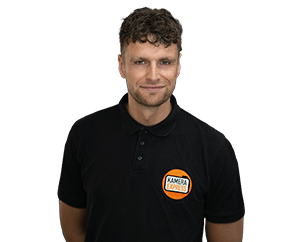Reflector
By using a reflector you can reflect light onto the photo subject, and in so doing create or remove shadows. More about

Bresser TR-1 5-in-1 Reflection Screen 80cm Round
19.-

Bresser BR-TR1 5-in-1 Reflection Screen 60cm Round
13.-

Bresser TR-8 Collapsible Reflector Silver/White 90x120cm
List price 16.-
15.-

Bresser TR-4 Diffuser Screen 100x150cm
List price 17.-
16.-

Bresser TR-1 5 in 1 Reflection Screen 60x90cm
16. 50

Bresser TR-5 Reflection Screen Gold/Silver Round 60cm
List price 13.-
12.-

Bresser TR-5 Reflection Screen Gold/Silver Round 110cm
21. 90

Godox 110cm 5in1 reflection screen gold, silver, white, black and translucent white
List price 29.95
23. 95

Bresser TR-1 5 in 1 Reflection Screen 107cm Round
25.-

Godox 80cm 5in1 reflection screen gold, silver, white, black and translucent white
24. 95

Profoto OCF Zoom Reflector
List price 165.-
159.-

Jinbei M9 Reflector Barn Door
List price 49.95
21. 99
Everything you need to know about reflectors
What is a reflector?
A reflector is a screen made up of different materials that acts as an extra source of light during photography. Reflectors are often foldable and come in many shapes and sizes; the most popular being circular and oval. By placing a reflector the light from a light, flash or the sun can be reflected and therefore spread better over the subject. As such, a huge advantage is that the affordable Bresser, Falcon-Eyes and Lastolite reflectors can create enhanced contrast in the photo you wish to take.
Angle of incidence and angle of reflection
In order to understand how a reflector works it is important to grasp how light reflects. Each light beam falls at a particular angle on the reflector, this is known as the angle of incidence. The angle at which the light reflects back is equal to the angle of incidence, so the latter is equal to the angle of reflection. Take a ball that bounces against a smooth wall in a straight line. This will bounce off the wall at the same angle. Similarly, it is therefore possible to place the reflector at a particular point by a person so that a camera's flash light reflects precisely onto that person. Optimal results are attained when reflecting on the reflector's edge, as this yields a more natural, softer light.
Use with multiple light sources or reflectors
By using a reflector with a light source stunning photos of people or products can be made, whereby the contrast can be tweaked and accents introduced. By using with multiple light sources (e.g. flash kit) it is possible to have the light fall onto the subject from up high or from low down. In this way a person's body can be fully set apart from the ground and background. Another option is to buy a second reflector, which helps you achieve the same result, but at a lower price.
Different sizes
Reflectors come in all shapes and sizes, the one you choose will depend on the distance to the subject and the size of the light sources you're using. A larger reflector provides a larger surface area to reflect the light off. With portrait photography it is vital to get the whole person properly into the picture, so you will need a larger reflector for this. A 30cm reflector will suffice for close-ups, whereas a reflector measuring at least 1m will be needed to capture a person. This all depends on the distance from which you're taking your photos, of course; the further away you stand, the larger the screen you will need.
Colour effects of reflectors
Besides the different shapes and sizes reflectors come in, a range of colours are also available, each with individual effect. These reflectors are usually combined as 2-in-1, 5-in-1 of even 7-1 sets. The colours of the reflectors create different effects on the subject. Popular reflectors include:
- White: with a white reflector you ensure the subject is illuminated in soft, subtle lighting. The reflected light is minimal, thus creating a more natural effect.
- Silver: the bright reflection off a silver reflector creates effective shadowing and contrasting. Ideal for indoor use, given the hard reflection of the sun cannot be muted outdoors.
- Gold: this colour reflector is what you need if you're looking to create a warm effect. This sunny glow is perfect for imbuing a warm allure.
- Blue: the blue reflector is particularly useful as background to an object. The blue hue can simulate a watery setting as well as the open air.
- Green: nature can be simulated with a green glow. This effect is rarely used, but can also be used to mute blue hues in the subject.
- Transparent: a transparent or diffuse white reflector isn't really intended to reflect light, rather to mute and soften it. Take for example sunlight; by using a transparent reflector you can highlight details of the subject.
- Black: this colour doesn't reflect and as such is primarily used to block light. Indeed, light can generate unwanted effects on the subject, which a black reflector can prevent.
Extra accessories
Various products are available on the market that can be used in conjunction with a reflector. A reflector stand can be mounted onto a tripod, to use at your desired height. Another accessory is an arm, which you can use to hold the reflector from a distance.
What brand to choose?
Do you have a particular brand in mind? We have various top brands:
Lastolite | Bresser | Godox | Falcon-Eyes | Interfit
































































